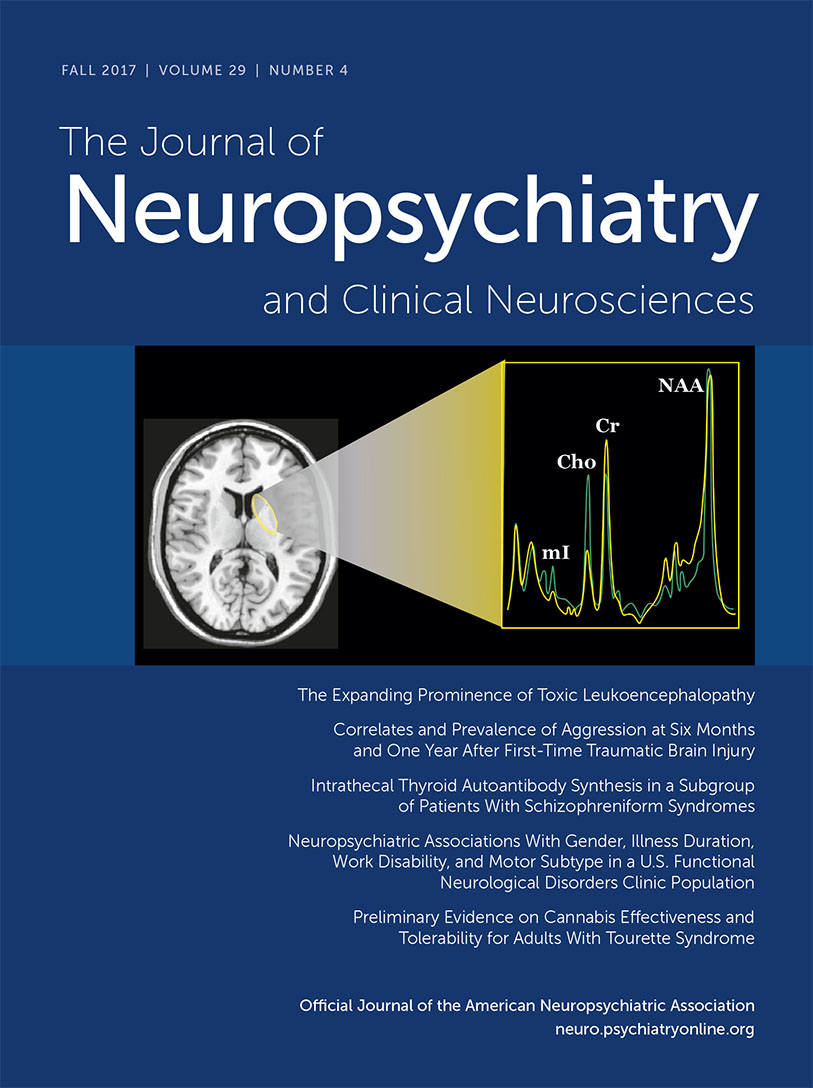Low-Frequency rTMS Ameliorates Akathisia During Pregnancy
Akathisia, a drug-induced extrapyramidal syndrome, is a common side effect of psychotropic medications, including antidepressants, and is usually a subjective discomfort described by patients, with a wide range of symptoms that may involve the entire body and be more prominent in specific body regions. It has even been reported as hemiakathisia.1,2
The pathophysiology of akathisia remains unclear. A mechanism in which compensatory increased noradrenergic activity is triggered by dopamine reduction has been recently proposed.1 Because there are no biomarkers, the diagnosis is made by clinical observation using the Barnes Akathisia Rating Scale (BARS) for assessment and follow-up.2,3 There is no specific treatment other than reducing the dosage or switching medication. However, introducing new medications is not recommended during pregnancy.2 Repetitive transcranial magnetic stimulation (rTMS) is a noninvasive brain stimulation technique that uses magnetic pulses to induce changes when a series of trains are applied. It is successfully used in different movement and psychiatric disorders, but, to our knowledge, its use has not been previously reported in akathisia.
Case Report
A 34-year-old woman in her first pregnancy at 20 weeks of gestation, with a history of major depressive disorder that achieved remission after a 6-week course of rTMS, experienced chronic akathisia that started after introduction of fluoxetine and worsened with pregnancy. The patient presented with mild to moderate akathisia from head to toe, with more severe symptoms in the left extremities, determined to be marked akathisia using BARS criteria.3
Cortical excitability was assessed on both sides, using a Carefusion Viking Quest EMG (Pleasanton, Calif., Natus Medical, Inc.) system in sync with a Magstim Rapid 2 transcranial magnetic stimulator (Morrisville, N.C., Magstim, Inc.), with a figure-of-eight coil, by cortical silent period (CSP) and resting motor threshold (RMT) targeting the first dorsal interosseous muscle, with an RMT 7% difference, being lower on the right cortex (35% versus 42%), and no differences on the CSP.4 Because of the RMT difference and left-sided akathisia, we decided to apply a single session of 1-Hz rTMS over the right M1, at 90% of RMT, using a figure-of-eight coil, with the handle at approximately 45° to the parasagittal plane with the coil handle pointing postero-laterally, since low-frequency stimulation over primary motor cortex (M1) has been shown to reduce dopaminergic activity and cortical excitability.5,6 After delivering 600 pulses, no changes were observed in the patient or in RMT and CSP. A total of 600 more pulses were applied, and the right RMT increased 7% and decreased 2% over the left cortex. No significant differences were observed in the CSP. The patient reported feeling an improvement in symptoms, and her BARS rating improved from marked to mild akathisia. The patient maintained this clinical improvement during the remainder of her pregnancy (for details, see Table 1).
| Item | Barnes Akathisia Rating Scale (BARS) | |||||
|---|---|---|---|---|---|---|
| Resting Motor Threshold | Subjectivea | Global Clinical Assessment of Akathisia | ||||
| Left Cortex | Right Cortex | Objectiveb | Awareness of Restlessness | Distress Related to Restlessness | ||
| Before rTMSc | 42% | 35% | 2 | 3 | 3 | 4 |
| After rTMSd | 40% | 42% | 0 | 1 | 2 | 2 |
| End of pregnancye | — | — | 0 | 1 | 2 | 2 |
TABLE 1. Clinical and Neurophysiological Assessments
At the time the rTMS single session was administered, the patient was in her 20th week of gestation, and, similar to previous reports of rTMS in preganacy,7 no adverse pregnancy or fetal outcomes were observed. The offspring was male, born via cesarean section at week 39 of gestation. No congenital malformations or side effects were observed in the infant. The mother and infant were discharged after 1-, 5-, and 10-minute Apgar assessments, with scores of 9/10, 10/10, and 10/10, respectively.
Discussion
To our knowledge, this is the first study in which rTMS was used to ameliorate akathisia. The clinical improvement and the increased RMT achieved by using low-frequency rTMS over M1 does not support the compensatory increased noradrenergic activity theory, since a reduction in dopaminergic activity has been reported when 1-Hz rTMS is applied.6 We suggest that low rTMS may be an alternative tool that needs to be explored to confirm these results for akathisia patients for whom switching medications is not effective or is not an option.
1 : The mechanism of drug-induced akathsia. CNS Spectr (Epub ahead of print, January 15, 2011)Google Scholar
2 : The clinical challenges of akathisia. CNS Spectr 2015; 20(suppl 1):1–14, quiz 15–16Crossref, Medline, Google Scholar
3 : A rating scale for drug-induced akathisia. Br J Psychiatry 1989; 154:672–676Crossref, Medline, Google Scholar
4 : A practical guide to diagnostic transcranial magnetic stimulation: report of an IFCN committee. Clin Neurophysiol 2012; 123:858–882Crossref, Medline, Google Scholar
5 : A comprehensive review of the effects of rTMS on motor cortical excitability and inhibition. Clin Neurophysiol 2006; 117:2584–2596Crossref, Medline, Google Scholar
6 : Possible mechanisms underlying the therapeutic effects of transcranial magnetic stimulation. Front Hum Neurosci 2015; 9:303Crossref, Medline, Google Scholar
7 : An open label pilot study of transcranial magnetic stimulation for pregnant women with major depressive disorder. J Womens Health (Larchmt) 2011; 20:255–261Crossref, Medline, Google Scholar



